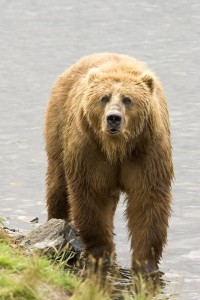
Restricted and Controlled Classes of Animals
Under Ohio law, certain animals are subject to special laws, restrictions and regulations. This makes it extremely difficult to own, transport, sell, or purchase animals classified as “Dangerous Wild Animals” or “Restricted Snakes“.
Frequent research on this subject is important, as many of these restrictions didn’t come into effect until as recently as 2014. Certain kinds of organizations, such as licensed research laboratories or circuses, may be exempt from some of these regulations.
Dangerous Wild Animals (as defined by law)
Section 935.01(C) of the Ohio Revised Code uses the term “Dangerous Wild Animal” to include the following categories of species:
- Bears
- All species of African “wild dog”
- Grey wolves (not including domestic hybrids, called “wolfdogs“)
- Lions
- Servals (not including domestic hybrids, called “savannah cats”)
- Tigers
- All species of cougar or mountain lion
- All species of lynx
- Jaguars
- Most nonhuman primate species (not including lemurs)
- Most large, non-native mammals (elephants, rhinoceroses, hippopotamuses)
- Alligators
- Crocodiles
- Gharials
- Caimans (excluding dwarf caimans)
- Hyenas
- Cheetahs
- Komodo dragons
- Caracals
- Any hybrid of the above species (unless otherwise specified)
Owning a Dangerous Wild Animal
As of January 1, 2014, Ohio law forbids any person from owning creatures fitting the legal definition of “Dangerous Wild Animal”. While there are a few exceptions to this rule, they require adherence to a strict set of guidelines. All Dangerous Wild Animals must be registered with the Director of Agriculture in accordance with section 935.04 of the Ohio Revised Code.
A person may own a Dangerous Wild Animal only if:
- The person has been issued a license by the Department of Agriculture (in accordance with the Animal Welfare Act);
- The Director of Agriculture has confirmed that the person is an accredited member (or is in the process of becoming an accredited member) of the Zoological Association of America or the Association of Zoos and Aquariums;
- The person has been explicitly informed by the Director of Agriculture that he or she is exempt from division (A) of section 935.02 of the Ohio Revised Code.
An organization may own a Dangerous Wild Animal only if:
- The Director of Agriculture has confirmed that the organization is accredited or verified (or is in the process of becoming accredited or verified) as a wildlife sanctuary by the Global Federation of Animal Sanctuaries;
- The organization has been explicitly informed by the Director of Agriculture that it is exempt from division (A) of section 935.02 of the Ohio Revised Code.

Wildlife Sanctuary Permit
Any owner of a registered Dangerous Wild Animal who doesn’t intend to propagate that animal is required by section 935.05 of the Ohio Revised Code to obtain a Wildlife Sanctuary Permit from the Director of Agriculture.
This application process requires a great deal of care, as it must include a detailed plan of action if the animal escapes, proof that the applicant has at least 2 years of experience dealing with this species of animal, proof of financial responsibility, and proof of an established veterinarian-client relationship with regard to each Dangerous Wild Animal owned (among other requirements). Before applying for a permit, it is important to make sure that you are fully aware of the risks and requirements of running a Wildlife Sanctuary, and that you have the time and resources to maintain it.
Caring for Dangerous Wild Animals
It is absolutely imperative for any owner of a Dangerous Wild Animal to thoroughly research the prescribed methods of care for each kind of animal in his or her possession, and to follow all guidelines set forth by the Director of Agriculture, as well as all rules set forth in the Federal Animal Welfare Act.

